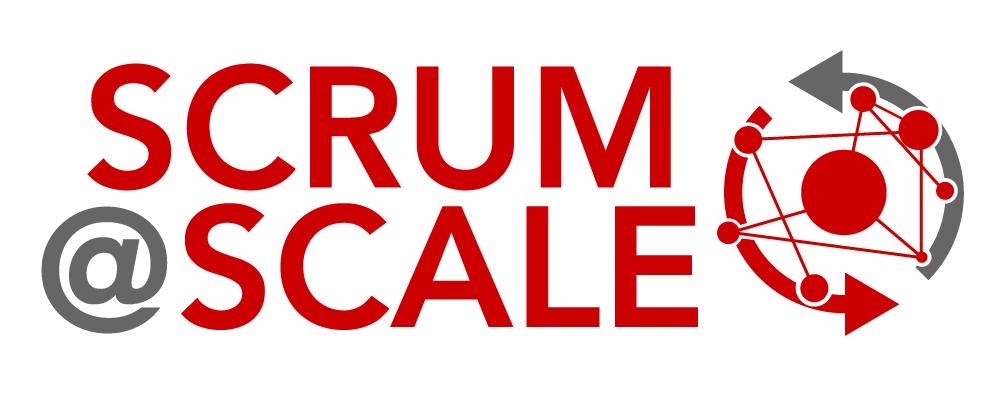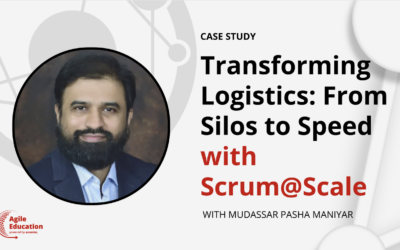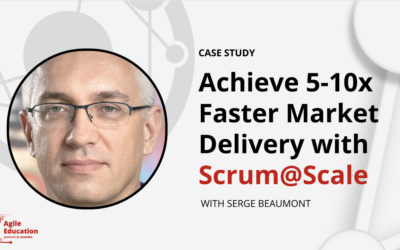Agile Education Case Study
Breaking a Three-Year Stalemate: Agile Coaching That Delivered in Six Months
A Private Equity (PE) platform initiative at a boutique Managed Fund Administration firm had stalled for three years due to cultural resistance, framework conflicts, and lack of alignment. Thus Paul Casanova was brought in as Delivery Coach to rebuild trust, form the first cross-functional Scrum team, and introduce tailored, hands-on agile coaching.
Within six months, the team delivered its first feature after years of inaction. As a result, velocity increased 4.5x, rework decreased, and the platform was adopted by a top global private equity fund administrator.
CASE STUDY SNAPSHOT
Trainer Name: Paul Casanova
Industry: Finance
Organization Size: Large
Topic: Adapting to Change
Date: 2025
LinkedIn: https://www.linkedin.com/in/paulrcasanova/
A Boutique Managed Fund Administration (MFA) Firm (acquired by a major financial services company)
Challenge:
After three years of stalled progress, a high-stakes Private Equity (PE) platform initiative remained stuck. As a result, leadership conflicts, cultural resistance to Agile practices, and misalignment on delivery frameworks paralyzed momentum. The traditional waterfall methodology failed to adapt to the complexity and uncertainty inherent in the PE domain. Additionally, a history of command-and-control processes clashed with the empirical, iterative needs of modern product development, subsequently leaving corporate clients growing increasingly frustrated.
Approach:
Paul’s strategy as the Delivery Coach was grounded in empathy, transparency, and adaptability. He began by reestablishing trust through one-on-ones, listening sessions, and shared learning that modeled the Scrum values of courage, openness, and respect. Rather than enforcing Agile top-down, he co-created a tailored coaching plan using Scrum’s evidence-based methods. He designed and facilitated structured discovery workshops, introduced collaborative backlog creation techniques like story mapping and example mapping, and implemented forecasting through relative estimation and Monte Carlo simulations.
Keys to Success:
- Created the first fully dedicated cross-functional Scrum team in the organization
- Embedded coaching into daily rituals by leveraging Sprint Reviews, Planning, and Retrospectives as live learning experiences
- Introduced behavioral-driven development (BDD) to reduce rework and increase clarity
- Used data-backed forecasting to earn leadership buy-in and aligned expectations
Results:
- Delivered the first PE feature in just 6 months, after 3 years of inactivity
- Velocity increased by 4.5x, from 12 to 54 story points per Sprint
- Rework significantly reduced, leading to more stable Sprints and higher team satisfaction
- The feature is now incorporated into the platform of one of the world’s top private equity fund administrators
Lessons Learned:
- Culture change starts with trust, not process enforcement
- Tailored facilitation and coaching beats off-the-shelf solutions
- Forecasting with both relative estimation and Monte Carlo builds credibility with leadership
- Real-world immersion trumps theoretical Agile training, learning by doing drives adoption
Conclusion:
This case study wasn’t just about implementing Scrum, rather, it was about reigniting belief. By focusing on people, transparency, and a relentless commitment to empirical delivery, he transformed skepticism into sustained momentum. As a result, the PE platform is no longer an aspiration, it’s a delivered, value-generating reality.
About Paul Casanova
Paul Casanova is a Registered Scrum Trainer™ and Certified Working Genius Facilitator who helps teams align strengths, build trust, and deliver with consistency. With over a decade of experience in agile coaching and delivery, Paul blends the structure of Scrum with the insight of Working Genius to reduce friction, improve collaboration, and unlock sustainable performance. His practical, people-first approach empowers teams to thrive, doing work that matters, in ways that work.



